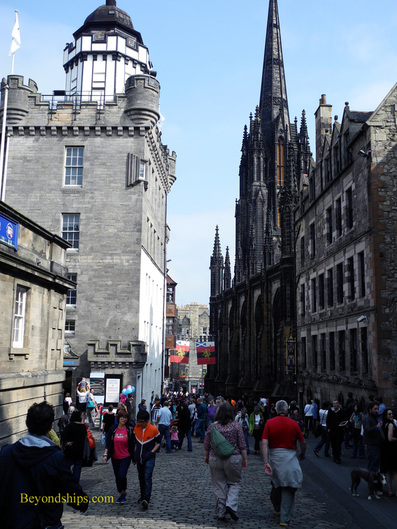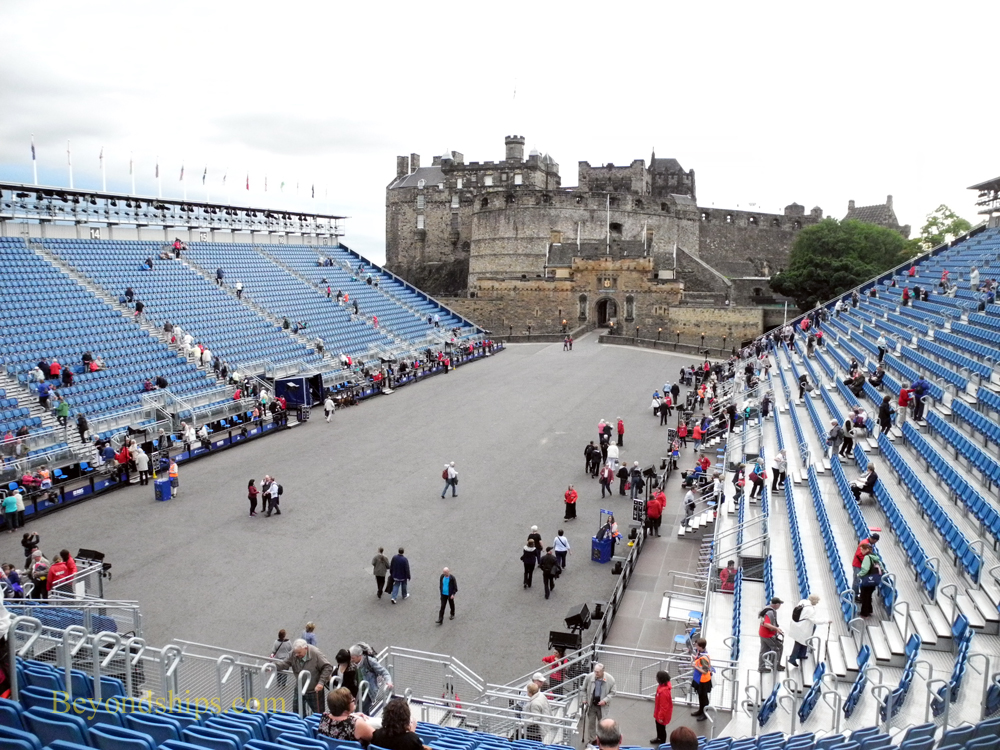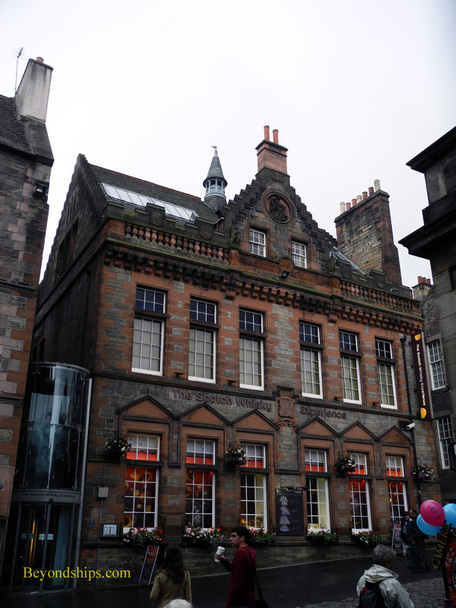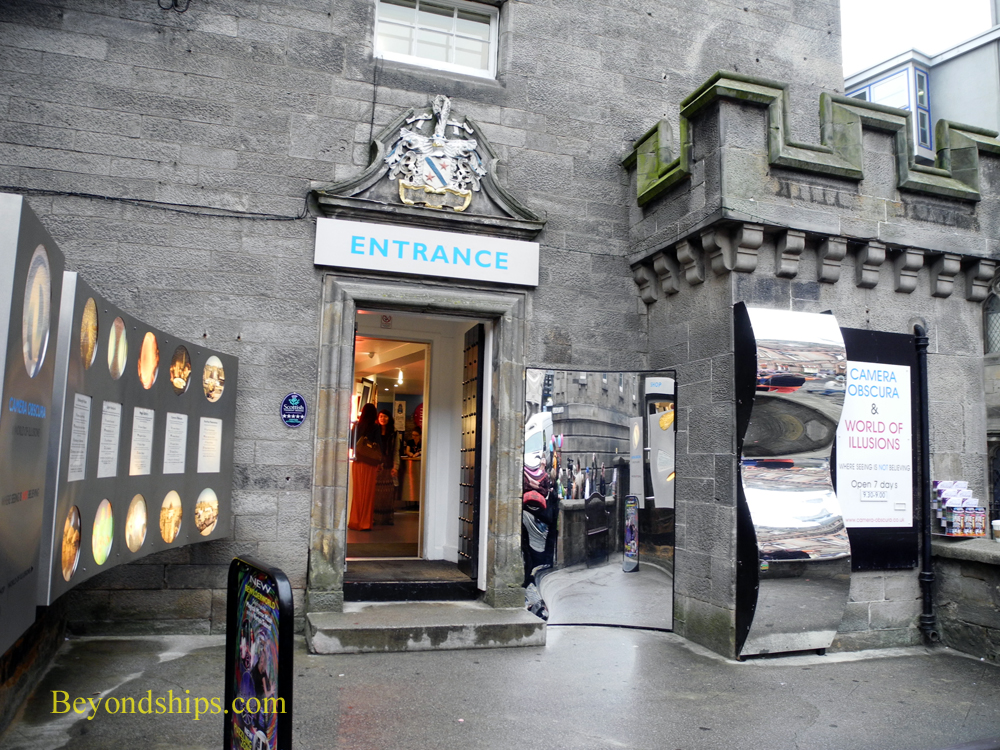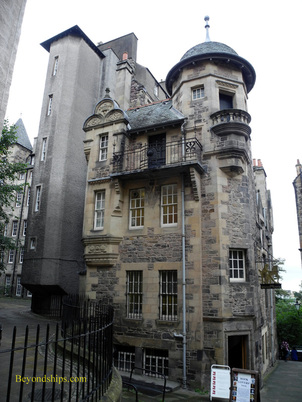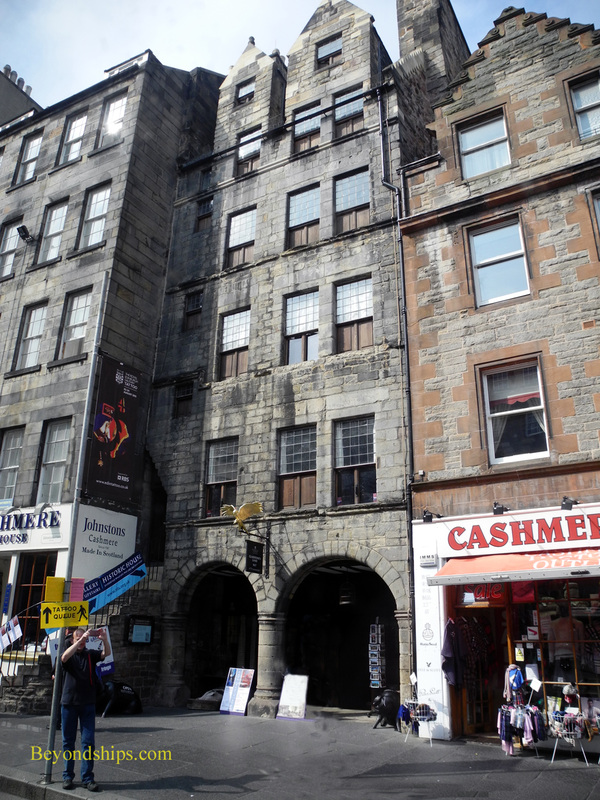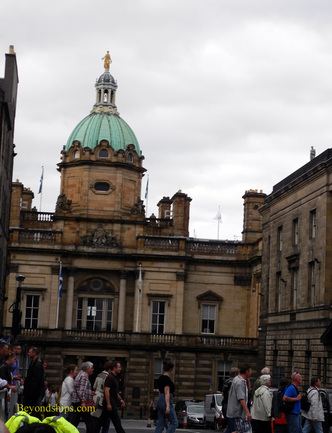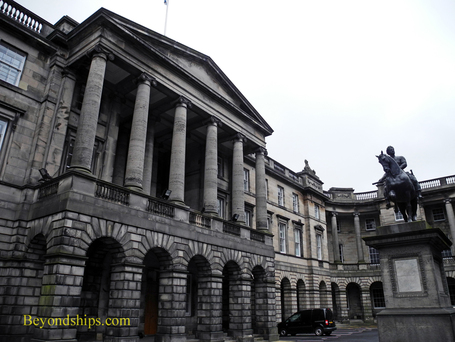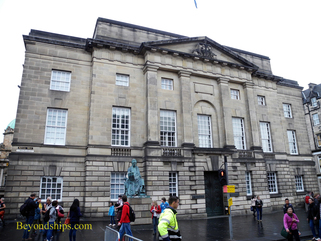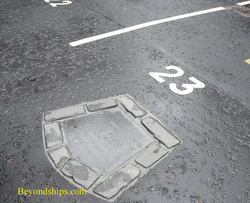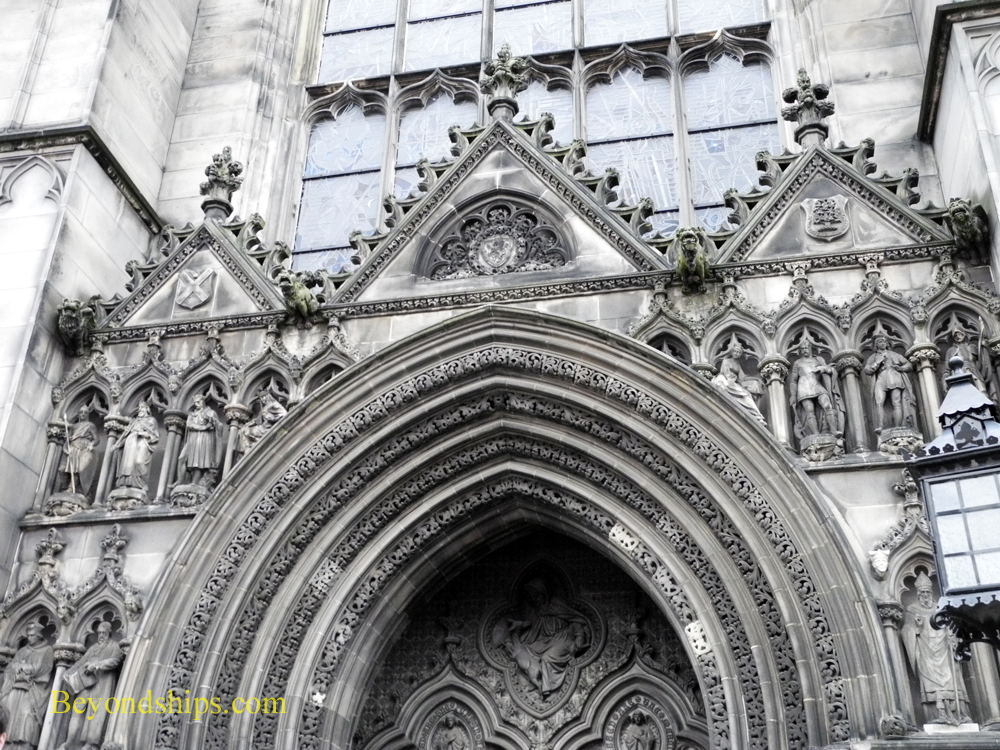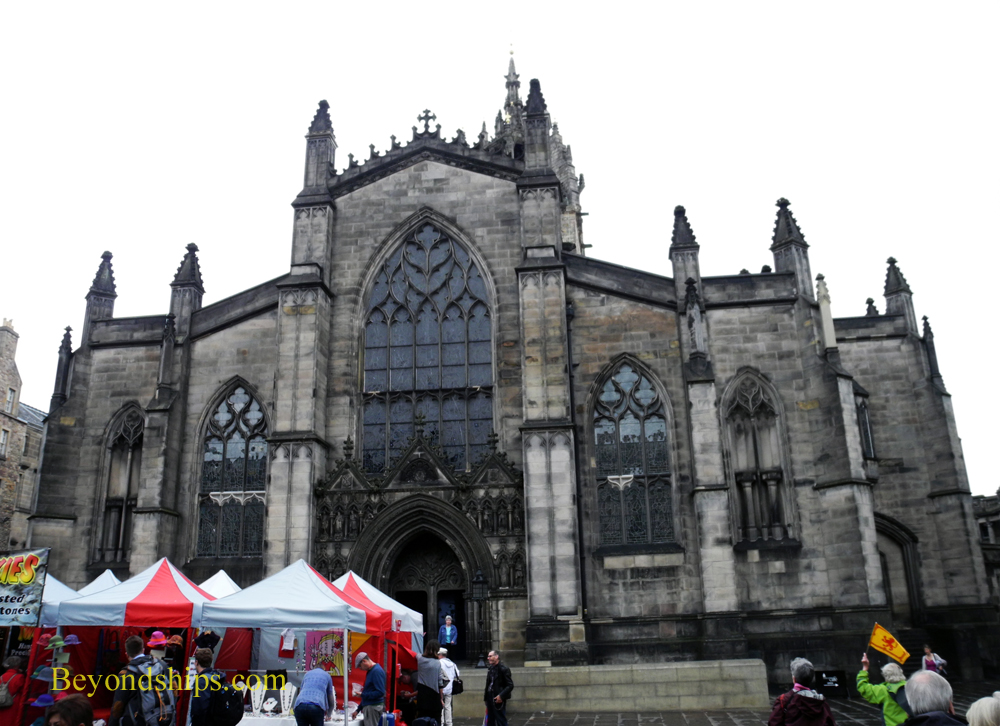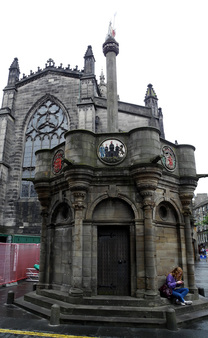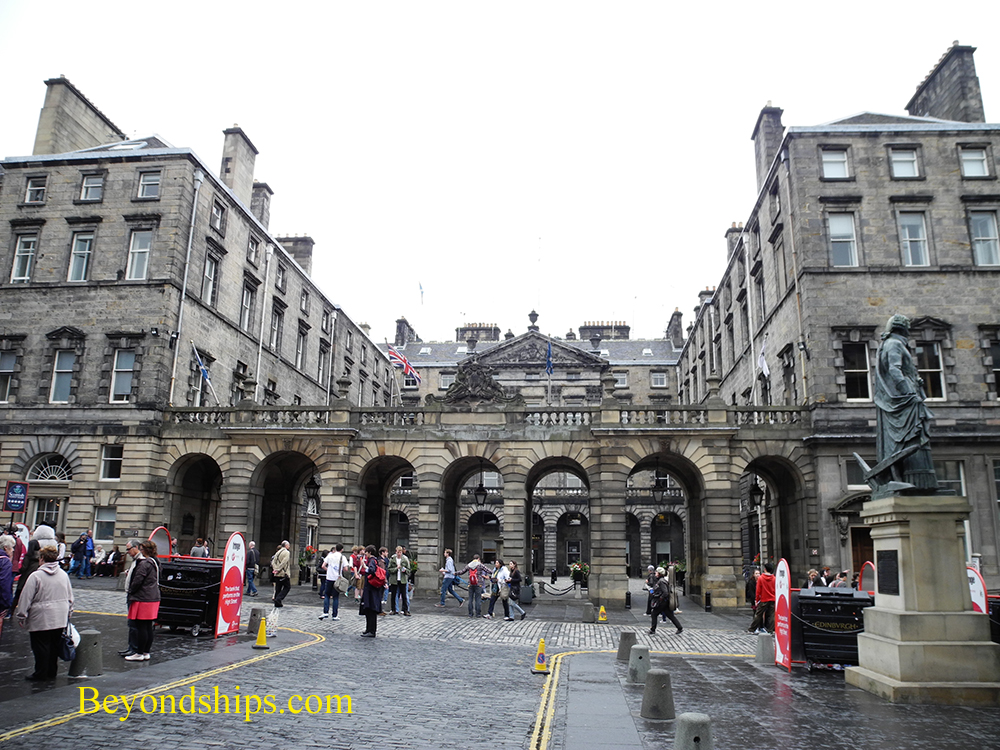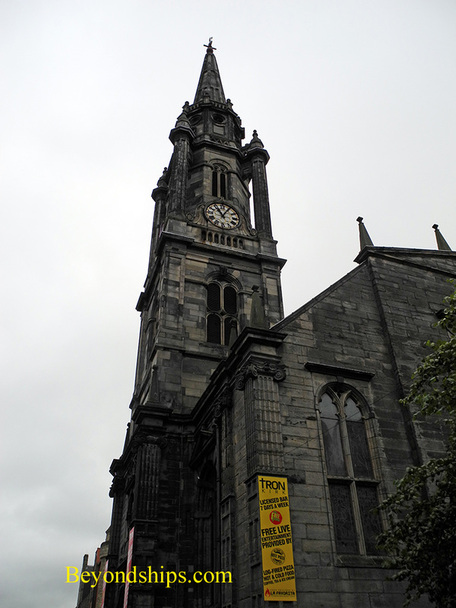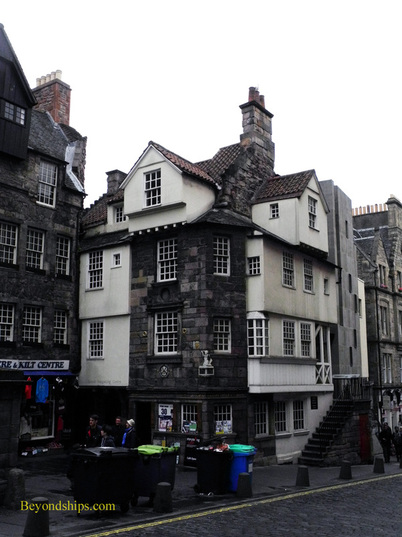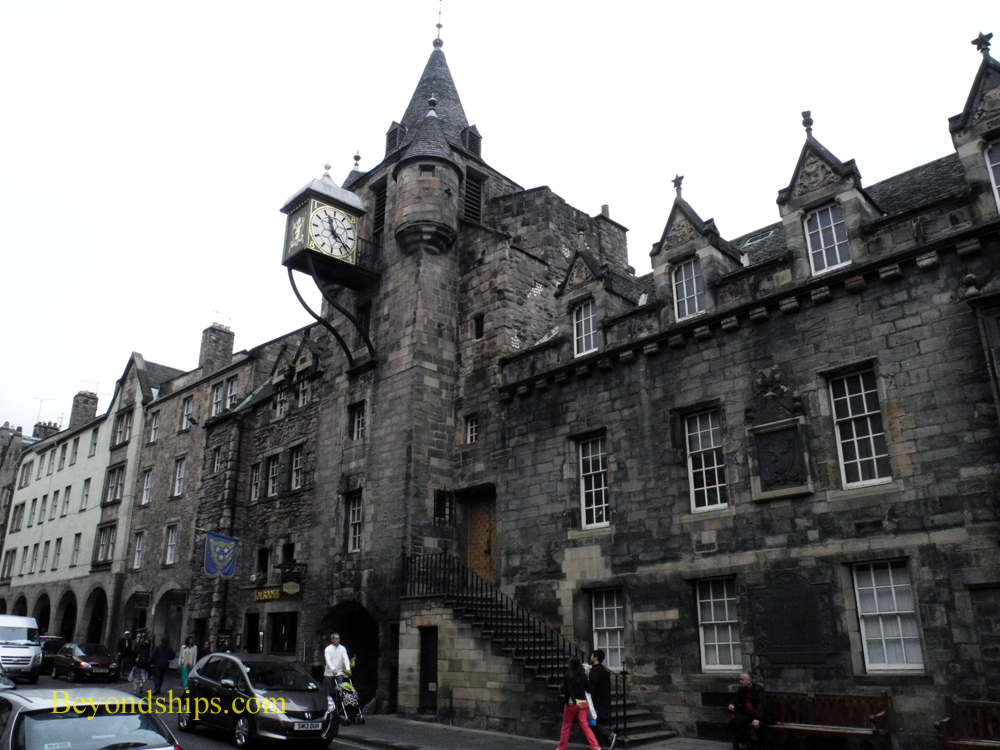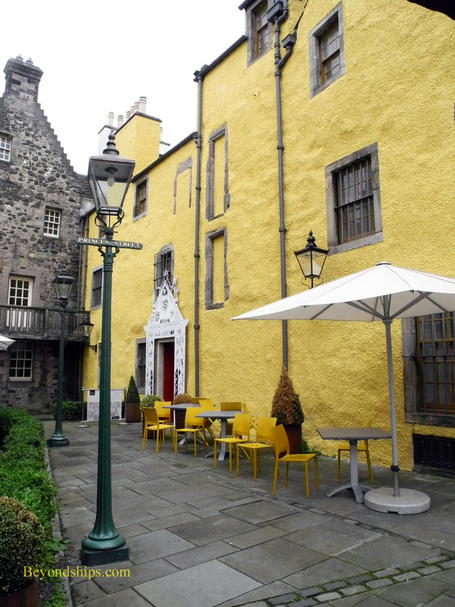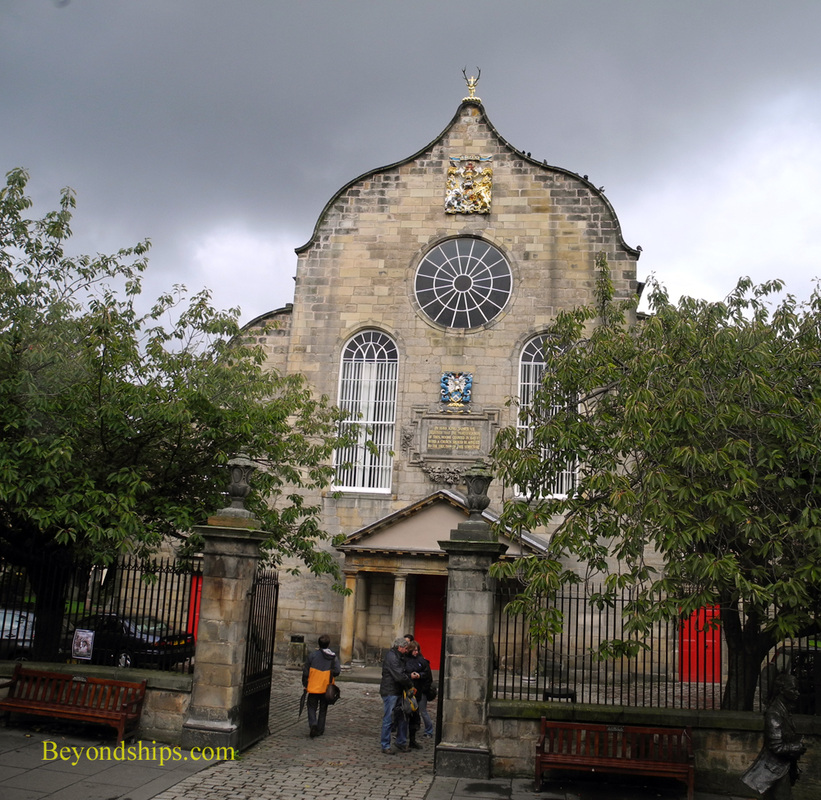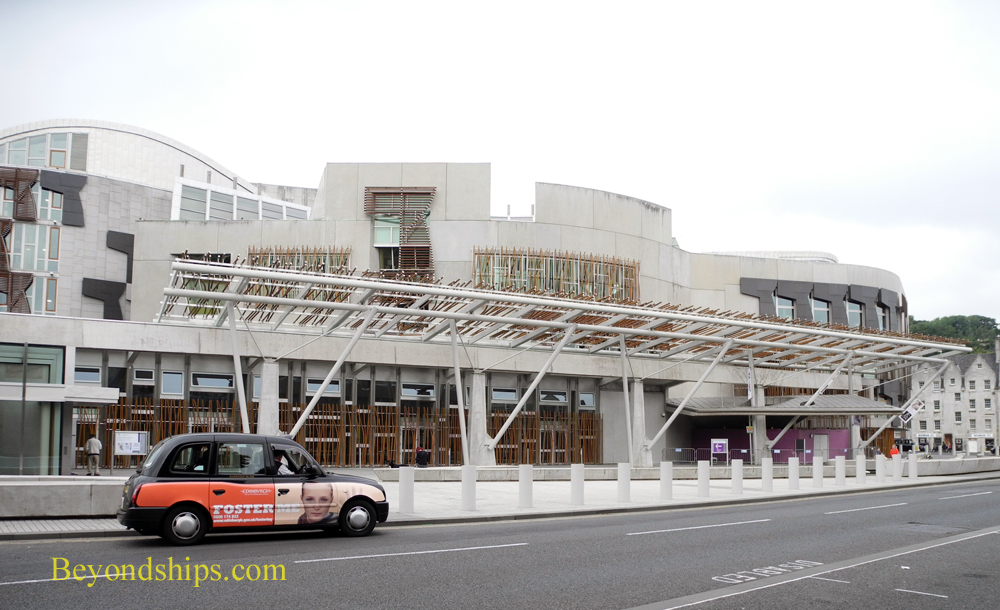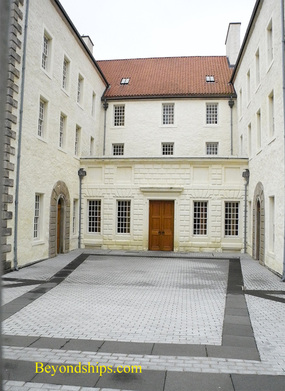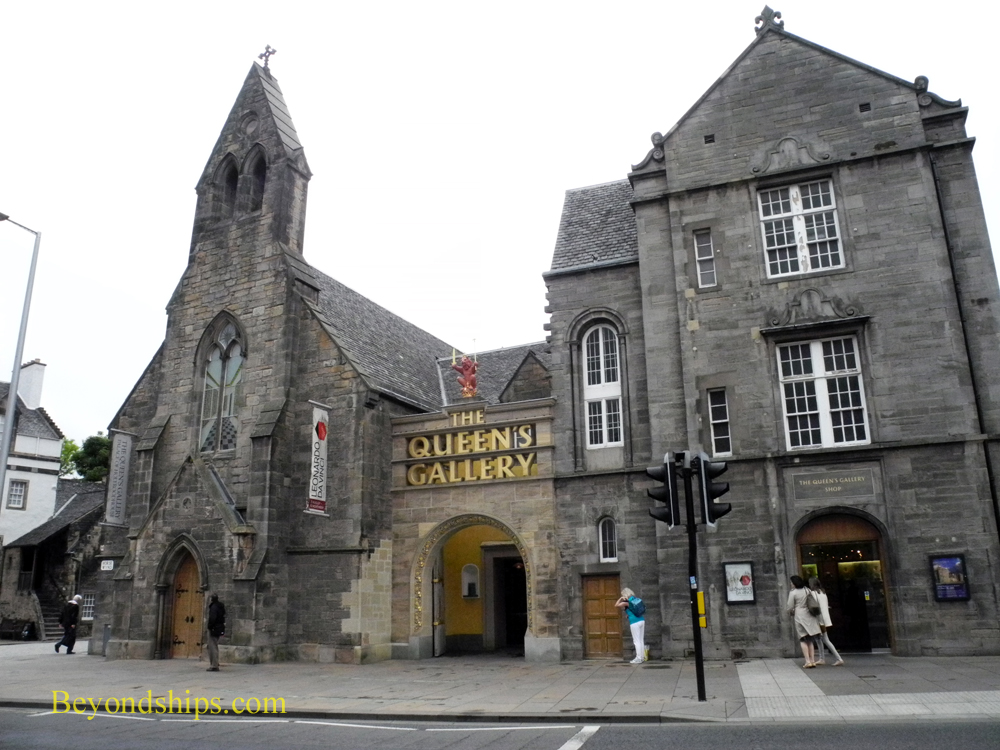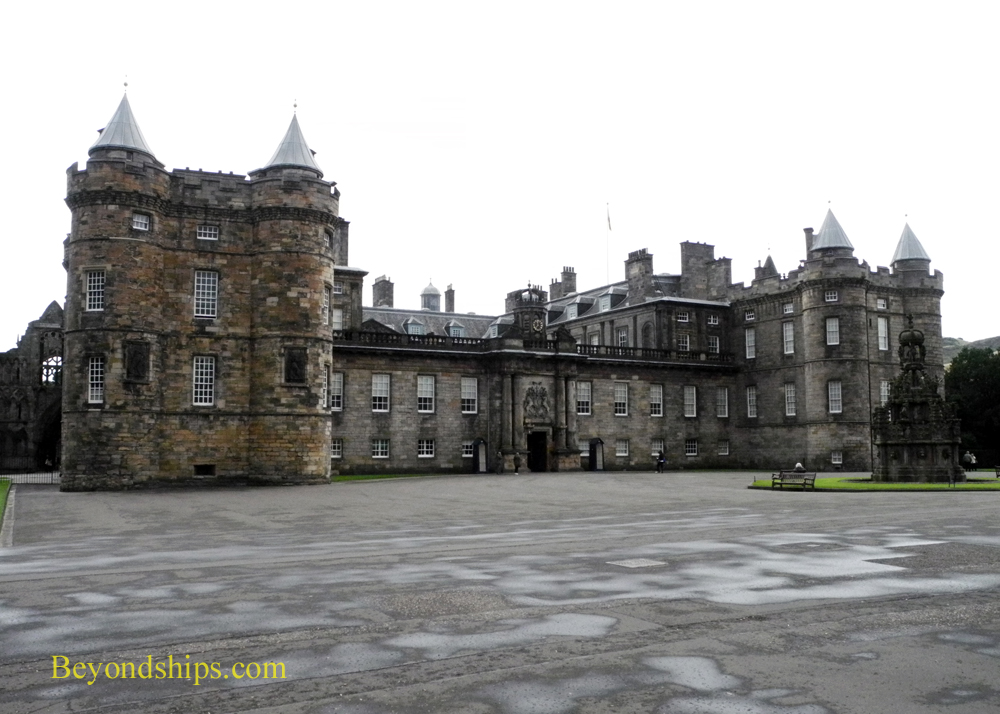|
The Royal Mile is one of Edinburgh's most popular tourist areas. It is primarily of note for its landmark buildings, historical sites and museums. However, it also has numerous cafes, pubs and shops along its length.
|
Running from Edinburgh Castle to the royal palace at Holyroodhouse, the Royal Mile is one Scots mile long (approximately 1.12 miles). Although it goes in a straight line and appears to be one street, the street name changes several times.
|
|
|
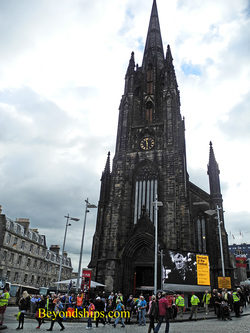
The Royal Mile begins at Edinburgh Castle (see separate article). Leaving by the east gate, the first area you traverse is the Esplanade, a parade ground laid out in 1753 (left). In August of each year, it is turned into a stadium where the Edinburgh Royal Military Tattoo takes place.
The first actual street on the Royal Mile is Castle Hill. There are several popular tourist attractions here. The Scotch Whisky Experience (lower left) tells the story of the famous Scottish beverage and houses a replica of a distillery. Down the street on the other side is Camera Obscura in the Outlook Tower (below). In the 19th century, Maria Short installed a camera obscura at the top of this tenement, which showed views of the city. The camera is still in use and along with other exhibits is open to the public. At the first intersection is the former Tolbooth-Highland-St John's Church (upper right). It is now called "The Hub" and is an information center for the Edinburgh International Festival. |
|
Located where the street narrows is the John Knox House (above), which is associated with the Protestant religious reformer and which dates from 1490. It is now part of the Scottish Storytelling Center.
Proceeding further down the hill, the street name changes to Canongate. Canongate was once a separate burgh from Edinburgh and on the left side of the street is the Canongate Tolbooth (upper right), which is where travelers paid a toll to enter the burgh. Built in 1591, it has also been used as a prison, a courthouse and a tavern. Today, it houses a museum called "The People's Story." On the opposite side of the street are a collection of 16th to 18th century buildings that make up the Museum of Edinburgh (right). |
|
Moving further along, there is the Kirk of the Cannongate (left). Completed in 1691, it is the last resting place of Adam Smith and of Mary Queen of Scots' secretary David Rizzo, who was murdered in front of her. More recently, the Kirk was the scene of the marriage of Zara Phillips, Queen Elizabeth's granddaughter.
On the opposite side of the street is the architecturally controversial Scottish Parliament Building, which opened in 2004 (below left). Queensbury House is now part of the Parliament complex (below). It dates from 1686 and is said to be haunted by a servant boy who was roasted and eaten by the Earl of Drumlanrig in 1707. |
|
At the end of the Royal Mile you come to the Queen's Gallery (above), which is used to show works of art from the royal collection. Behind it is the royal residence Holyroodhouse Palace (right; see also separate article).
|
|
|
|
Cruise destination - Scotland - Edinburgh Attractions - Royal Mile
